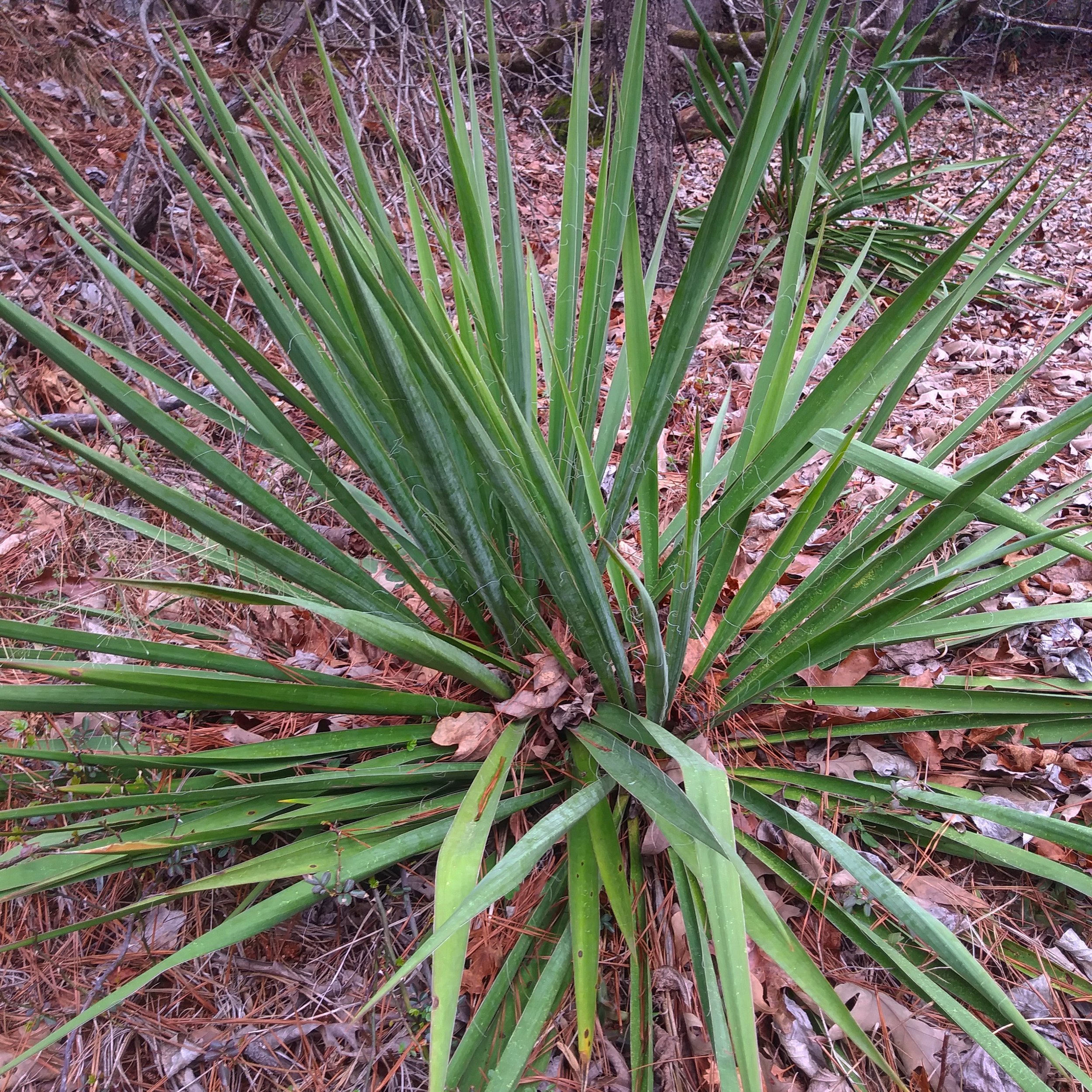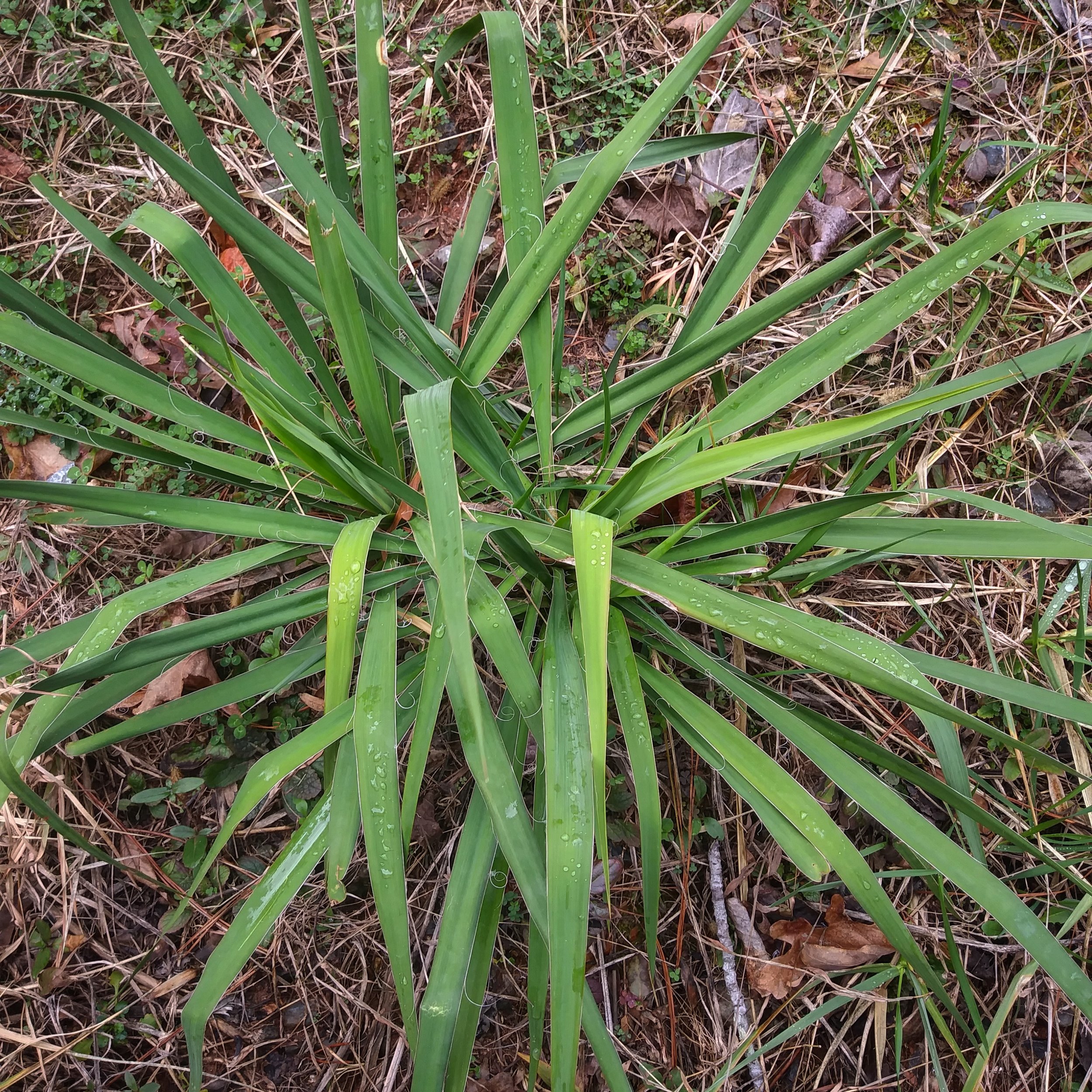Author’s Note: This post was originally published on the SARCRAFT Blog on 2/21/2018.
Today’s plant for #WildEdibleWednesday is Yucca, spp. flaccida, filamentosa, and grandiflora, sometimes called Adam’s Needle, Spoonleaf Yucca, Spanish Bayonet, and Needle Palm. Although it looks like something that should be growing in the desert Southwest (and it does), Yucca is actually native throughout the eastern half of the U.S. I consider it something of an unsung hero of the survival and bushcraft world – although rarely discussed, it is edible, medicinal, and a great source of cordage and firecraft materials.
Yucca is a widespread and hardy genus – species are native to large swaths of North, Central, and South America, in tropical and temperate climates. They are also naturalized in the Mediterranean, Africa, the Middle East, and Australia. They thrive in sandy, marginal soils, and can withstand severe drought. In north Georgia, unless they’ve been planted in an area, they are generally found on dry, rocky ridgelines. If you’ve been to Pine Mountain near Columbus, they grow in large thickets on the hilltops. There is also a small population on the top of Kennesaw Mountain. And of course, they’re widespread among the live oak groves on the Georgia coast, although you have to look closely to distinguish them from certain palmetto species.
Yucca is a woody perennial, with a deep taproot and a whorl of spine-tipped, often saw-toothed lanceolate leaves. The yucca in the third photo is the flaccida species, named for its droopy leaves. Other species in our area such as filamentosa (pictured) and grandiflora have much stouter leaves. It is evergreen, and puts on a new layer of leaves every spring. As such they grow slowly, and the specimens tall enough to be considered shrubs may be several decades old. From May through September, yuccas produce a 3’ tall bloom stalk with a spectacular show of white flowers. They’re beautiful, and impossible to miss. In late summer and early fall, the flowers fall off and the stalks produce a fleshy, waxy fruit about the size of a pawpaw.
Yucca is a class 2 edible, meaning that only certain parts of the plant are edible, or must be cooked in order to be eaten. Yucca is NOT the same as Yuca, or Cassava. This is a common misconception and many people have found this out the hard way. Yucca roots in Georgia are NOT edible. They’ll make you sick and you’ll vomit everywhere. Don’t be that guy. All of Yucca’s edible parts are above ground. When the flower stalk emerges in early spring (in the next month or so), it is a prime wild delicacy. It looks and tastes almost exactly like asparagus: it can be harvested, snapped into pieces, and steamed. The flower petals themselves are edible, although cooking is recommended. Many people have a negative reaction to them when eaten raw, i.e., burning of the mouth and throat, severe dry mouth, vomiting, etc. The fruit itself is highly nutritious and quite tasty when roasted or baked. Remove the seeds (also edible when roasted or boiled), scrape out the fibers, wrap in aluminum foil, and bake like a potato. It’s very high in carbohydrates, vitamins, and trace minerals.
Yucca is also medicinal. The roots contain powerful organic compounds called saponins, which can be medicinal or deadly depending on the dosage. Topically, it can be used safely as an effective medicinal poultice to reduce swelling, numb painful areas, and aid in blood clotting to stop bleeding. It has traditionally been used by some tribes as a sedative in rituals or to cure insomnia. However, dosage is everything. Large doses usually come straight back out of the body one way or the other, but not always. Saponins can cause paralysis, respiratory failure, and death when completely absorbed. We don’t recommend it. However, the Cherokee turned this paralytic effect to their advantage: They often made bowls of the root paste and dumped it into slow-moving waters to “shock” the fish. As soon as the saponins diffused in the water, the paralyzed fish would float to the surface where the fishermen would paddle by and collect them by the basketful.
Yucca has several survival and bushcraft uses, and they’re all really, really cool. Three particular ones stand out. In late fall once the flowers and fruit have finally fallen off the flower stalk and it’s had a chance to dry, it becomes the best drill spindle in the world for primitive firecraft, bar none. Yucca has the lowest combustion point of any wood, and will give you a significant advantage with your friction fires for this reason.
The second great survival use for yucca is as soap. Depending on the species, you can either crush the root and diffuse it in water to make soap, or lather up with the raw juice. It’s a powerful surfactant and will effectively de-grease your pots and pans, your utensils, or your hair, as the case may be.
And finally, yucca is an excellent source of natural cordage. Y. filamentosa sheds filaments that while they’re short, are extremely strong. All yucca species have extremely tough, fibrous leaves that can be processed into high-quality cordage. The easiest way to do this is simply to break the tip off the leaf and pull. The strands of fiber will come right out, and the spiny leaf tip makes a great ready-made sewing needle. Two of yucca’s common names, Adam’s Needle and Needle Palm, reflect this.
Any plant that can be used for food, fire, medicine, cordage, and even poisoning fish is worth some recognition in my book. While Yucca isn’t the most widespread plant in the Eastern Woodlands, it’s still a valuable asset to bushcraft and wilderness survival, and is well worth knowing. What about y’all? Has anyone out there used yucca? What’s your favorite use? Or did we miss one? Tell us in the comments!
- Alex




